Note: Measurements have been converted to square miles (from acres, square kilometers, and meters) to make comparisons easier.
10. Ladonia
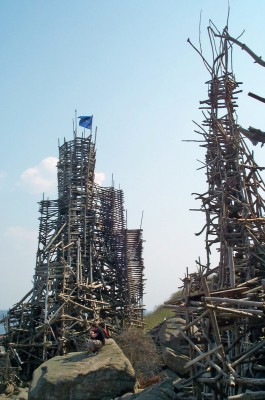
Size: .386 of a square mile
In 1980, Swedish artist Lars Vilks built a series of wood and stone sculptures on the beach of the Kullaberg nature preserve in Skane, Sweden. The artworks, which look like strange whimsical castles, eventually became a popular tourist attraction. They also drew the ire of the local city council, which decreed that Vilks had illegally built a “house” in a nature preserve and demanded the pieces be removed. Not willing to see his art destroyed, Vilks did what any reasonable person would do: he declared the stretch of beach to be an independent, sovereign nation free from the laws and rules of the Swedish government. Vilks named his new country the Kingdom of Ladonia, and quickly came up with a flag and a manifesto that said that his nation’s only tax policy was that citizens should “give away their creativity.”
By the 2000s, Vicks’s country had built up an unofficial population of 14,000—unofficial because none of them actually lived there—made up mostly of fellow artists and other supporters of his cause. It also claimed to have a currency (called the Ortug) and a national language (phrased Latin), and there was even a set series of social classes. Still, even today the fledgling country has yet to impress Sweden, which has never recognized it as a legitimate nation.
9. The Kingdom of Redonda
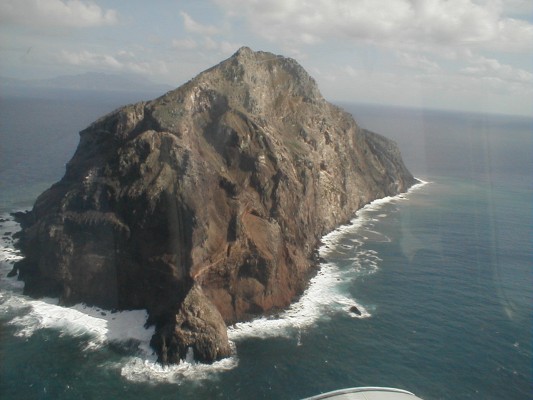
Size: .78 of a square mile
The back-story on the Kingdom of Redonda has been built up over the years by a number of artists and novelists, so its history is more than likely a mixture of fact and fiction. But as the story goes, in the 1800s Matthew D. Shiell, a resident of the Caribbean Island of Montserrat, made a claim on the rocky and uninhabited island of Redonda. The island is almost totally desolate, so Sheill never lived there, but he did serve as “King” from a distance and passed the crown on to his son M.P. Sheill in 1880. According to legend, Sheill even wrote to England’s Queen Victoria and requested that she recognize him as King of the island, to which she replied that she would, as long as he never rebelled against the crown.
M.P. Sheill later became a famous writer, and it was he who first told the story of Redonda and established most of its customs, including the flag and the style of government (absolute monarchy). He then passed the crown on to his friend John Gawsworth, who went by the name King Juan I. Since then, the crown and its power over Redonda’s 100 “citizens” have passed through a number of hands, and today there are as many as three would-be kings claiming the thrown. Perhaps the most famous of these is the Spanish writer Javier Marias. He has given out ceremonial titles in the Redondan kingdom to a number of artists, among them Francis Ford Coppola, Ray Bradbury, and Alice Munro.
8. The Republic of Minerva
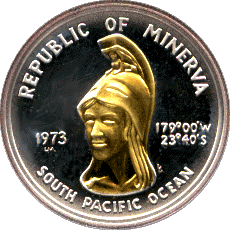
Size: 4 square miles
Micronations are often formed by groups hoping to advance political agendas and experiment with new forms of government, and of these the Republic of Minerva is probably the most famous. The country was started in 1972 by Michael Oliver, a real estate millionaire with a strong libertarian bent who envisioned a society with no taxes or social intrusions by government. He and his followers staked out a small cay in the South Pacific, and after dredging it with sand to create an artificial island, declared it a new country called the Republic of Minerva. A group of settlers arrived on the island in January of ’72 after the construction of a small tower, and the country raised a flag and declared itself sovereign.
Unlike most micronations, which are largely ignored by the international community, the Republic of Minerva actually caused quite a stir among the other South Pacific nations. After Minerva issued a declaration of independence and began coining money, a small conference was held between Australia, New Zealand, Tonga, and some other island nations to discuss the implications of there being a new country in the region. Tonga soon declared that Minerva and its nearby reefs were part of their country, and they even sent a small force to reclaim it and lower the Minervan flag. The Republic of Minerva has since been abandoned, but it was only the first of many experimental island nations, some of which remain in the works today.
7. The Dominion of Melchizedek
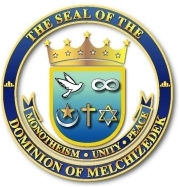
Size: 14 square miles
Small nations have often been used as tax-free havens and centers of fraud and identity theft, and the Dominion of Melchizedek, is certainly one of the more extreme examples. The upstart nation was formed in 1986 by Evan David Pedley and his son Mark Logan Pedley, both of whom have since served time in jail. Using the claim of sovereignty as a shield, for a number of years this island in the South Pacific (part of Antarctica) has operated as an offshore haven for phony banks and nearly every variety of fraud. The Dominion once issued passports for $10,000 a piece and has supposedly sold fake business licenses that were used by conmen and other swindlers to give their front companies a veneer of authenticity. The country has repeatedly been blasted as an outright sham, both by regulators and by the media (60 Minutes once profiled the DoM and was promptly sued by it), but it has yet to be shut down, and its website is still up and readily accepting applications for citizenship (for a fee, of course).
The Dominion claims to be an ecclesiastical state in the tradition of Vatican City, and lists several small cays in the south Pacific (one of which is some six feet under water) as its territory, along with a previously unclaimed part of Antarctica. The DoM has claimed that its sovereignty has been acknowledged by everything from the United Nations to the Central African Republic, but these allegations are widely considered to be false. This hasn’t stopped it from continually asserting its authenticity both online and in the media, most absurdly in 1995, when it briefly threatened France with nuclear war.
6. The Principality of Outer Baldonia
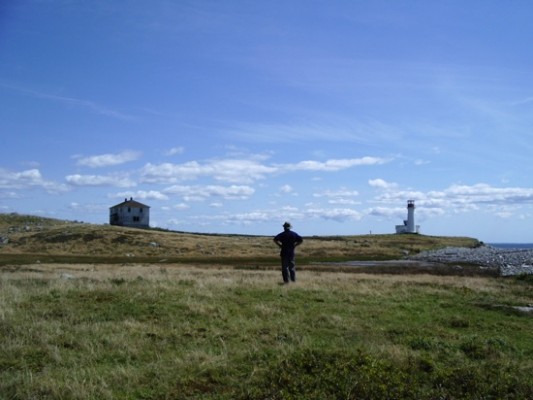
Size: .00625 of a square mile
The Principality of Outer Baldonia was a tongue-in-cheek nation started in 1948 by a publicist for Pepsi and notorious eccentric named Russell Arundel. He began his nation project after stumbling across a small island while sport fishing off the coast of Nova Scotia in Canada. He soon bought the island, built a small fishing lodge, and began regularly going on drunken weekend getaways to it with his friends. During one of these late night drinking sessions, Arundel and his pals concocted the Constitution (which mandated fishing and the consumption of rum as time-honored state pastimes) and Declaration of Independence for what they called the Principality of Outer Baldonia. They doled out government titles among the group (anyone who caught a tuna and paid a fee was immediately declared a “prince”), and even developed a currency. They later released a State Charter that stated taxes and women were banned from the island, and that its main export was empty beer bottles.
Baldonia would have remained just a joke among friends, but Arundel went so far as to list his office number in Washington D.C. as that of the Embassy for the Principality. Soon, he and his imaginary country were being invited to state functions, and Baldonia was supposedly mistakenly asked to join the United Nations. Arundel and his fake country even became famous enough to warrant criticism from a Soviet newspaper, which Baldonia responded to, naturally, with a declaration of war. The Baldonian Navy, which was made up entirely of local fishing vessels, supposedly took the sea in order to attack the Russians, but it can only be assumed that they got sidetracked and went drinking instead.
5. Frestonia
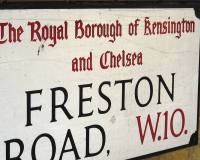
Size: .0028 of a square mile
In the late 70s, a small, derelict section of the Notting Hill region of London gained worldwide attention after it declared its independence from the rest of Britain. The community, which called itself Frestonia thanks to its location on Freston road, was made up of squatters and other counterculture types who had been threatened with eviction by the local city council. Unwilling to abandon their lifestyle, the residents banded together, and after voting overwhelmingly to secede, declared themselves a sovereign nation on Halloween night 1977. They quickly applied for induction into the United Nations, and warned that peacekeeping troops would be needed if the council tried to evict them by force. Because of constant media coverage, the city found it difficult to throw the Frestonians out of their neighborhood, and following a public inquiry the micronation was given the right to exist.
The residents jumped at the opportunity to build their own nation, and soon created their own newspaper, postage stamps, national anthem (three of them, actually), and even a film institute that regularly showed concert footage of the Sex Pistols. The area became a counterculture haven, to the point that in 1982 The Clash even came to the community to record their album Combat Rock. Eventually, though, members of the region negotiated an agreement with the city to help in rebuilding the crumbling district. This meant that Frestonia lost its cherished freedom from the British government, and many of the original citizens moved away. The organization of the little country-within-a-country soon collapsed, but even today the neighborhood remains an unusually close-knit community.
4. Talossa
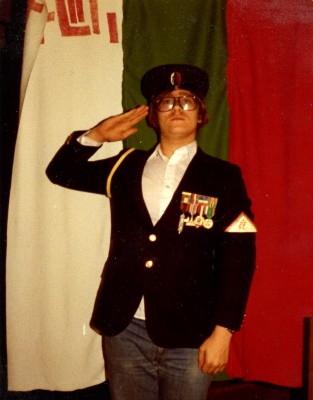
Size: Indeterminate, but includes a good part of Milwaukee, Antarctica, and some French islands
The internet has become a veritable playground for amateur nation builders, as new countries—many of which exist only on paper—can use websites and blogs as a way to build up their populations and drum up support for their cause. There is perhaps no better example of this than Talossa, an upstart country formed in 1979 by then-14-year-old Robert Ben Madison of Milwaukee, Wisconsin. It officially seceded from the United States in the same year (though, as its website states, the U.S. didn’t seem to notice) and established itself as a constitutional monarchy with “King Ben” as its head. In the beginning, Talossa was just a joke hobby (the original “Kingdom” consisted of Madison’s bedroom), but in 1995 Talossa became the first micronation to get a website, and from there its legend and its membership grew rapidly. Soon, it had developed a cult following, and conventions called Talossafests were regularly held in and around Milwaukee.
As micronations go, Talossa features one of the most fully realized cultures. Fans have traced its “history” back to the Berbers, written a national anthem (“Stand Tall, Talossans”) and, most impressively, composed a 25,000-word dictionary of their own invented language, the so-called Talossan Tongue. As one of the world’s oldest micronations (Madison claims to have coined the term), Talossa has become famous the world over, but it has not been without controversy: in 2004, a group of citizens rebelled against the crown and formed the Republic of Talossa, and it seems that a rival Kingdom has also recently sprung up—all only online, of course. Photo: King Robert I (successor to King Ben).
3. Hutt River Province
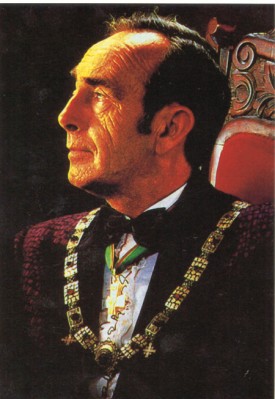
Size: 28.9 square miles
Few micronations ever have any real success at being recognized by the larger countries that they “secede” from, with the notable exception of Australia’s Hutt River Province. Its history dates back to 1970, when Leonard Casley, a farmer from outside of Perth, got into a dispute with government officials over wheat quotas. When no reasonable compromise could be reached, Casley resorted to a loophole in British law and declared that he and his 75 square kilometer property had seceded from the state of Western Australia. A comedy of errors and inaction in the Australian government led to Casley’s claim receiving an uncommon amount of legitimacy, and when he was threatened with prosecution he simply declared himself “His Royal Highness, Prince Leonard of Hutt,” in order to take advantage of ancient law that made monarchs immune to arrest. Since then, the Hutt River Province, or the Principality of Hutt River, as it is now known, has existed in a legal grey area. Residents are not subject to Australian taxes, but the government has still never officially recognized the micronation as a sovereign entity.
Once Hutt River gained its de facto independence, Price Leonard immediately went about the business of drafting a bill of rights, a flag, and a form of money called the Hutt River Dollar. The Principality is still going strong today, and Hutt River has even become something of a tourist destination where visitors can buy Hutt River coins and get their picture taken with the Prince, who is now well into his 80s.
2. Seborga
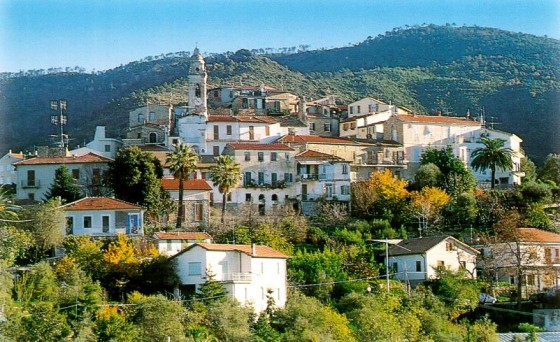
Size: 4 square miles
The history of Seborga dates back to the 10th century, when the small territory in northern Italy was granted independence and given to some monks so that they could build a monastery. Nearly seven hundred years later it was annexed by the Kingdom of Sardinia, which once owned large parts of Spain and Italy. But even after the end of the Sardinian Kingdom, Seborga was never officially claimed by the Italian state. Things stayed this way for another 200 years until the 1960s, when a local florist named Giorgio Carbone began arguing that the region had never lost its autonomy, and as such was technically an independent principality. Carbone managed to win over the local townspeople, and he was soon elected as the unofficial head of the “country” of Seborga.
Despite its newfound independence, things stayed mostly the same in Seborga until the mid-nineties, when the town’s 300 residents voted to once and for all declare independence from Italy. Carbone, who was already jokingly known as “your tremendousness,” became the official prince of the region, a title he held until his death in 2009. He was the most enthusiastic promoter of the Principality, and is responsible for instituting its flag, money, postage stamps, and motto “sub umbra sede” (which apparently means “Sit in the Shade”). The Italian government has never officially recognized Seborga—residents still pay Italian taxes and attend Italian schools—but they have not discouraged it from symbolically operating as a sovereign state, and today it even has its own standing army, which supposedly consists of a single soldier named Lt. Antonello Lacalo.
1. The Principality of Sealand
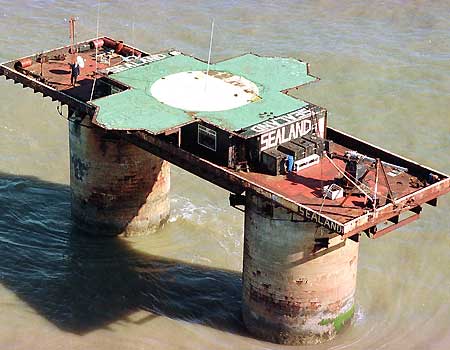
Size: .0002 of a square mile
Of all the tiny upstart nations in the world, perhaps none has managed to garner as much fame as the Principality of Sealand, a micronation built on an abandoned WWII sea fort off the coast of Britain. It was started in 1967, when famed pirate radio broadcaster Paddy Roy Bates occupied the platform and began using it as hub for his station “Radio Essex.” Bates began calling the fort “Sealand,” and by 1975 he had come up with a flag, a national anthem, a currency, and even passports. Unlike most micronations, Sealand has gained a remarkably high profile in the international community, if only for its readiness to use force. This was most apparent in 1968, when Bates’s son Michael used a rifle to fire on a British vessel that had entered Sealand’s territorial waters. He was handed a weapons charge, but managed to dodge it in court because Sealand was far enough off the coast that it was outside of British jurisdiction. This decision has been used time and again as proof of Sealand’s sovereignty, but it has yet to be recognized by any major country. Germany did send a representative to the fort during the so-called “Second Sealand Incident” in 1975, when a German citizen briefly claimed the platform before being ousted and imprisoned by the Bates, but it has since denied that this action means it recognizes Sealand as a legitimate nation.
In recent years, Sealand has become less of a country and more of a business venture. During the dot com era, it was briefly used as an offshore data hosting facility because of its lack of laws and regulations. It has also operated as a tourist destination, and in recent years the Bates family even unsuccessfully attempted to sell the Principality for some 750 million euros. Recently, it has been announced that a film about the history of Sealand is in production and is set to come out sometime in 2010.
